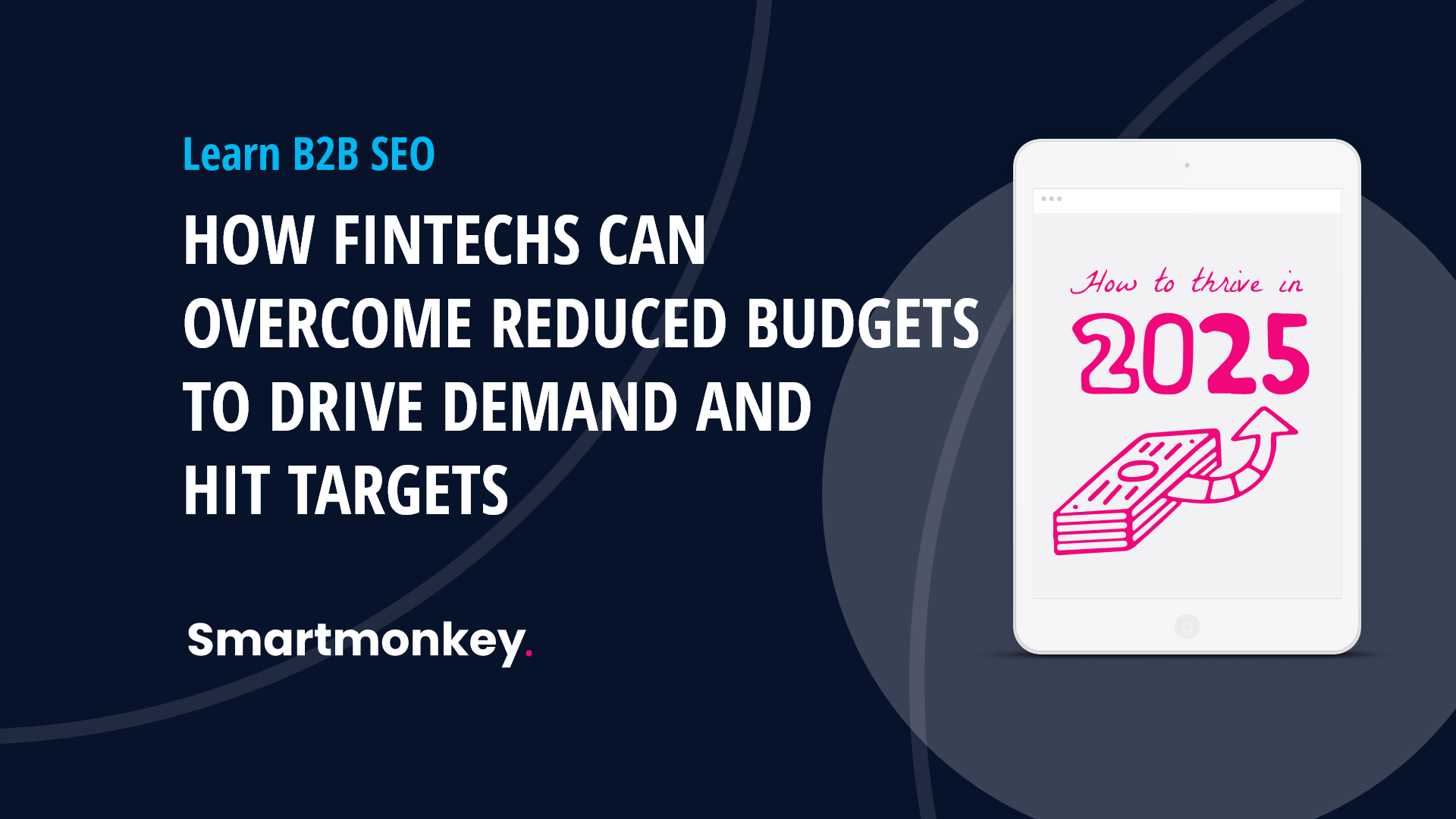How to thrive in ‘25: How fintechs can overcome reduced budgets to drive demand and hit targets
What will I learn?
- Focus on channels that work
- Invest in outsourced resources
- Upskill your existing team
- Invest in cost-effective channels
- Utilise email marketing

As a FinTech brand, you’ll know that it’s arguably never been tougher. While opportunities are vast, so are the challenges.
As a specialist B2B digital marketing agency that has worked with hundreds of companies over the last 18 years, we’ve ridden the wave of both micro and macroeconomic challenges with clients – and helped them overcome hurdles to succeed.
With the next 12 months looking to be just as tough as the last 24, with external factors putting pressure on businesses, we’ve identified five key things FinTechs are up against – and we want to help you overcome them.
One of the biggest challenges for marketers everywhere – and FinTech is no exception – is reduced budgets.
The economic downturn has affected companies around the world, and FinTechs are no exception. This year, CMOs reported that their budgets had decreased from 9.1% to 7.7% of company revenue. And as we hurtle towards 2025, only 35% of B2B marketers expect investments to increase by 5% or more.
While budget constraints are always a challenge, the past year – and the upcoming 12 months – look to test us again. But drawing upon our 18 years of experience, we know how you can overcome them to hit your goals.
Here’s how you can make the most of your budgets, and set yourself up to thrive in 2025:
Focus on channels that work

Understanding what channels are performing for you is crucial. Not every business needs a presence on every channel, so knowing your target audience inside out, how they like to consume information, and where they do it is key to managing your ROI.
For B2B FinTech businesses, it’s important to remember that while your target customer may be a business owner or key decision maker, they are also people first. This means that while focussing on traditional B2B channels is important, so are traditional B2C channels – like social media.
If you are one of the many marketing leaders who are facing a tight budget again next year, the best way to set yourself up for success is to do a thorough audit of all your marketing channels and crunch the numbers to see what channels are delivering the biggest ROI and impacting your bottom line. After all, there is no point in spending time and money on channels that your key audience/s does not use.
We advise looking at the last 12, 24, and 36 months separately to see growth, spot trends, and discover which channels have performed better YoY.
Invest in outsourced resources

Reduced budgets don’t just mean marketing spend – it can also mean team cuts and stagnation. While the tech sector, in particular, was booming during the pandemic, there has been a significant slowdown in growth. And the FinTech sector is no different. Stats state that layoffs have hit 50% of finance companies worldwide, and with economic uncertainty, that could further increase.
Outsourcing resources is a cost-effective way to plug gaps and drive demand. By just paying for the resources you need, a marketing agency’s monthly retainer is often less than a single employee’s package – and you usually get a full team’s expertise.
Upskill your existing team

If you have a team of specialists, it can be a good idea to upskill those who express an interest in learning new skills, to become generalists. For example, an SEO specialist may want to learn the ins and outs of PPC. Investing in PPC training for that employee can be a great use of a personal development budget, while ensuring you have the skills needed in-house.
It’s also been proven that employees who feel supported in their professional growth are more likely to stay with a company for a longer period than those who do not.
Invest in cost-effective channels

While you need to make sure you are visible where your customers are, it’s also important to funnel resources into the channels that pay for themselves.
Organic marketing channels, such as SEO and organic social media, are cost-effective as they produce the most ROI – both from a performance and brand awareness perspective. By targeting people who are already looking for a product, information, or advice, these channels capture potential customers at the informational, navigational, commercial, or transactional phase – without additional spend.
While these channels generally produce slower returns, get them right and you will reap the benefits for years to come.
Utilise email marketing

Email marketing doesn’t need to be expensive – if it’s done right. While you can buy data from external sources, tying your marketing channels together to capture email addresses at different points of the customer journey will make your email marketing extremely low cost.
It’s important to use email marketing wisely, however, to maximise effectiveness and reduce opt-outs.
Segmenting the audience and personalising emails to their buying habits to give them a value-driven experience will keep them engaged. It’s also a great idea to set up automated email workflows to nurture leads at each point of the buying journey, such as downloads, sign-ups, or site visits.
Be sure to track key metrics like open rates, click-through rates, and conversion rates, and use these insights to understand what resonates with your audience and refine your strategy accordingly.
If you found this useful and would like to find out more about our specialist fintech SEO services, get in touch.




